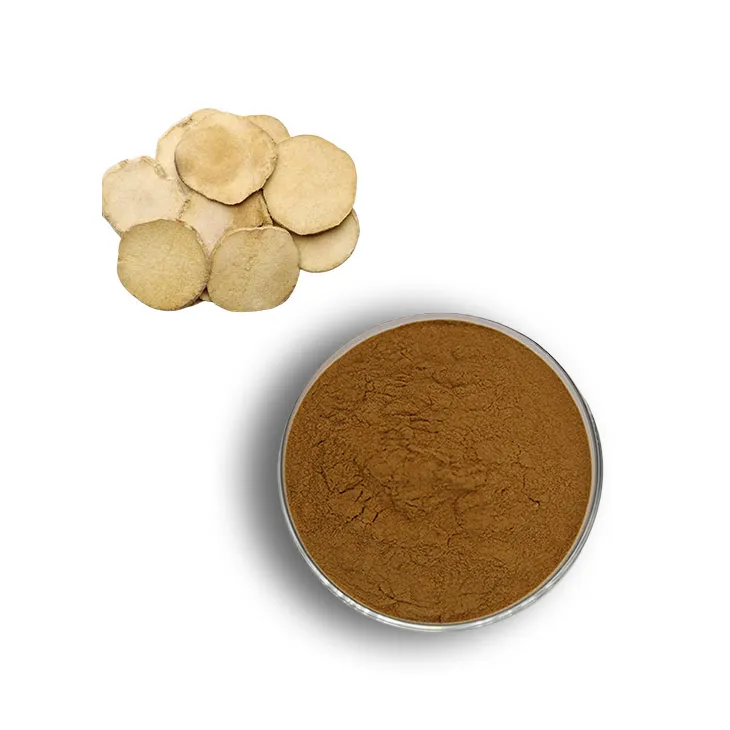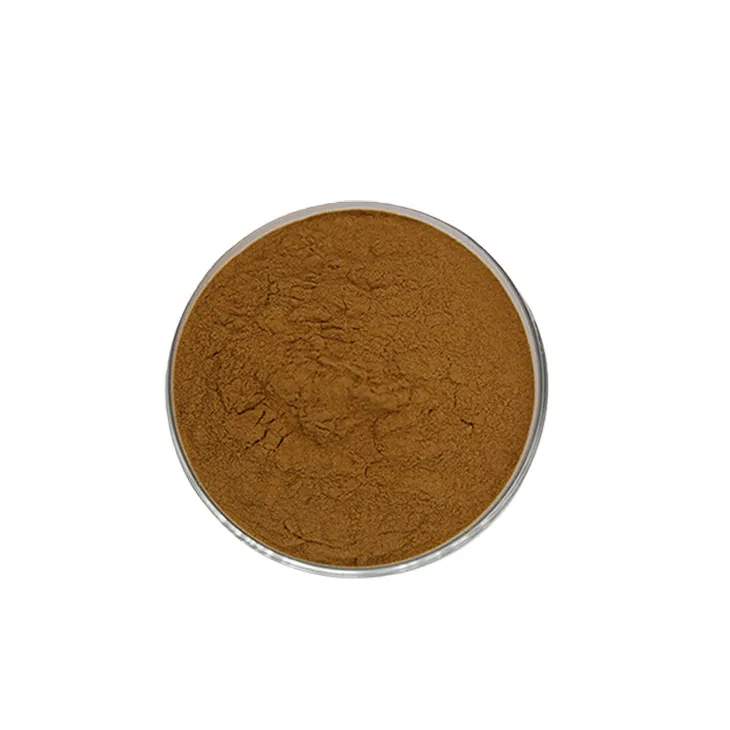- 0086-571-85302990
- sales@greenskybio.com
Alisma extract: Uses, Advantages, and Manufacturing Processes.
2024-11-13

1. Introduction
Alisma is a plant that has been used in traditional medicine for centuries. Alisma Extract is derived from this plant and has gained significant attention in recent years due to its potential health benefits. This article will explore the various uses, advantages, and manufacturing processes of Alisma Extract.

2. Uses of Alisma Extract
2.1 Traditional Medicine Applications
In traditional medicine systems, such as Traditional Chinese Medicine (TCM), Alisma has long been used for kidney - related issues. It is believed to help with functions like promoting diuresis, which is important for regulating fluid balance in the body. For example, in cases of edema, where there is an abnormal accumulation of fluid in the body tissues, Alisma extract may be used to help the body excrete the excess fluid. This can potentially relieve symptoms such as swelling in the legs, ankles, or other parts of the body.
2.2 Modern Pharmacology Applications
- Metabolic Disorders: There is growing evidence that Alisma extract may have potential applications in treating metabolic disorders. For instance, it may play a role in regulating blood sugar levels. Some studies suggest that certain compounds in the extract can interact with the body's metabolic pathways related to glucose metabolism, which could be beneficial for patients with diabetes or pre - diabetes conditions.
- Lipid Regulation: Alisma extract may also have an impact on lipid metabolism. It could potentially help in reducing high cholesterol levels in the blood. This is important as high cholesterol is a risk factor for various cardiovascular diseases. By modulating the lipid profile, the extract might contribute to a healthier cardiovascular system.
- Anti - inflammatory Effects: Inflammation is a key factor in many diseases. Alisma extract has shown anti - inflammatory properties in some research. It may be able to inhibit certain inflammatory pathways in the body, which could be useful in treating inflammatory conditions such as arthritis or other autoimmune disorders.

3. Advantages of Alisma Extract
3.1 Low Toxicity
One of the major advantages of Alisma extract is its relatively low toxicity compared to some synthetic drugs. Synthetic drugs often come with a range of side effects, some of which can be severe. In contrast, Alisma extract, when used appropriately, has been shown to have a lower incidence of adverse effects. This makes it a potentially safer option for long - term use, especially for chronic conditions where patients may need to take medications over an extended period.
3.2 Natural Origin
As a plant - derived extract, Alisma extract has the advantage of being a natural product. Many people prefer natural remedies over synthetic ones, believing that they are more in line with the body's natural processes. The natural origin of Alisma extract also means that it may contain a complex mixture of compounds that work synergistically, which could potentially provide more comprehensive health benefits compared to single - compound synthetic drugs.

4. Manufacturing Processes of Alisma Extract
4.1 Raw Material Selection
The first step in the manufacturing process of Alisma extract is the careful selection of raw materials. High - quality Alisma plants need to be sourced. The plants should be grown in suitable environments, free from contaminants such as pesticides and heavy metals. Only healthy and mature plants should be selected for extraction to ensure the quality of the final extract.
4.2 Pretreatment of Raw Materials
- Once the Alisma plants are selected, they need to be pretreated. This may involve cleaning the plants thoroughly to remove any dirt, debris, or other impurities. After cleaning, the plants may be dried to an appropriate moisture content. Drying helps in preserving the plants and also makes the extraction process more efficient.
- Sometimes, the plants may be cut or ground into smaller pieces before extraction. This increases the surface area of the plant material, allowing for better extraction of the desired compounds.
4.3 Extraction Methods
- Maceration Extraction: A common method for extracting Alisma extract is maceration extraction. In this method, the pretreated Alisma plant material is soaked in a suitable solvent. The choice of solvent is crucial and depends on the solubility of the target compounds. For example, ethanol or water - ethanol mixtures are often used as solvents. The plant material is soaked in the solvent for a certain period, usually several days to weeks. During this time, the solvent penetrates the plant cells and dissolves the desired compounds. After maceration, the resulting solution contains the extracted compounds along with the solvent.
- Soxhlet Extraction: Another extraction method is Soxhlet extraction. This is a more continuous extraction process. The Alisma plant material is placed in a Soxhlet extractor, and the solvent is continuously refluxed through the plant material. This method is more efficient in extracting compounds that are less soluble or are present in small amounts in the plant. However, it requires more complex equipment compared to maceration extraction.
- Supercritical Fluid Extraction: Supercritical fluid extraction is a relatively newer and more advanced method. In this method, a supercritical fluid, such as supercritical carbon dioxide, is used as the extracting agent. Supercritical fluids have properties between those of a liquid and a gas, which gives them unique extraction capabilities. This method can produce a cleaner extract with fewer impurities compared to traditional solvent - based extraction methods. However, it also requires specialized and expensive equipment.
4.4 Purification and Concentration
After extraction, the resulting solution contains not only the desired compounds but also other impurities. Therefore, purification steps are necessary. These may include filtration to remove solid particles, followed by techniques such as chromatography to separate the different compounds present in the extract. Chromatography can be used to isolate the active compounds from other non - active or unwanted substances. After purification, the extract may be concentrated to increase the concentration of the active compounds. This can be done through methods such as evaporation of the solvent under reduced pressure.
4.5 Quality Control
Throughout the manufacturing process, strict quality control measures need to be implemented. This includes testing the raw materials for contaminants, ensuring the proper operation of extraction and purification equipment, and analyzing the final extract for its composition and purity. Quality control also involves standardizing the manufacturing process to ensure the consistency of the product. For example, parameters such as extraction time, temperature, and solvent - to - plant material ratio should be carefully controlled and monitored to produce a high - quality Alisma extract.

5. Conclusion
Alisma extract has a wide range of uses, from traditional medicine applications related to kidney function to modern pharmacology applications in treating metabolic disorders and inflammation. Its advantages, such as low toxicity and natural origin, make it an attractive option for health - related interventions. The manufacturing process of Alisma extract is complex and requires strict control over various parameters to ensure the production of a high - quality product. With further research, the potential of Alisma extract in the field of medicine may be even more fully realized.
FAQ:
What are the main uses of Alisma extract in traditional medicine?
Alisma extract is mainly used for kidney - related issues in traditional medicine. It has been long - recognized for its potential benefits in dealing with problems related to the kidney function within traditional medical systems.
How does Alisma extract show its advantage over synthetic drugs?
One of the major advantages of Alisma extract over some synthetic drugs is its relatively low toxicity. Synthetic drugs may sometimes have more significant side - effects and toxicity concerns, while Alisma extract offers a potentially safer alternative in certain applications.
Can you briefly describe the maceration extraction process of Alisma extract?
The maceration extraction of Alisma extract involves soaking the Alisma plant material in a suitable solvent. This soaking is carried out for a certain period, during which the desired compounds are gradually extracted from the plant material. After that, purification steps are required to obtain a high - quality Alisma extract.
What potential applications does Alisma extract have in modern pharmacology?
In modern pharmacology, Alisma extract has potential applications in treating metabolic disorders. It is being studied for its possible role in addressing various metabolic problems, which shows its value in the field of modern medicine development.
Why is strict control over parameters like temperature and extraction time important in the manufacturing process of Alisma extract?
Strict control over parameters such as temperature and extraction time is crucial in the manufacturing process of Alisma extract because these factors can significantly affect the quality and composition of the extract. Incorrect temperature or extraction time may lead to incomplete extraction of the desired compounds or the extraction of unwanted substances, thus affecting the final quality of the extract.
Related literature
- Studies on the Bioactive Compounds of Alisma Extract"
- "Alisma Extract: Traditional Use and Modern Pharmacological Research"
- "Manufacturing Techniques and Quality Control of Alisma Extract"
- ▶ Hesperidin
- ▶ citrus bioflavonoids
- ▶ plant extract
- ▶ lycopene
- ▶ Diosmin
- ▶ Grape seed extract
- ▶ Sea buckthorn Juice Powder
- ▶ Beetroot powder
- ▶ Hops Extract
- ▶ Artichoke Extract
- ▶ Reishi mushroom extract
- ▶ Astaxanthin
- ▶ Green Tea Extract
- ▶ Curcumin Extract
- ▶ Horse Chestnut Extract
- ▶ Other Problems
- ▶ Boswellia Serrata Extract
- ▶ Resveratrol Extract
- ▶ Marigold Extract
- ▶ Grape Leaf Extract
- ▶ blog3
-
High purity olive leaf extract
2024-11-13
-
Lavender oil extraction method
2024-11-13
-
100% organic virgin sea buckthorn fruit oil
2024-11-13
-
Lotus leaf extract powder factory in China
2024-11-13
-
China aged garlic extract supplier
2024-11-13
-
Deer antler extract powder manufacturer
2024-11-13
-
Saw palmetto extract vs whole herb
2024-11-13
-
Clove Powder
2024-11-13
-
Yohimbine Bark Extract
2024-11-13
-
Chaste Berry Extract
2024-11-13
-
Beetroot juice Powder
2024-11-13
-
Grape Leaf Extract
2024-11-13
-
Beta Carotene
2024-11-13
-
Honeysuckle Pollen
2024-11-13
-
Lycopene
2024-11-13
-
Ginseng Root Extract
2024-11-13
-
Mangosteen extract powder
2024-11-13





















